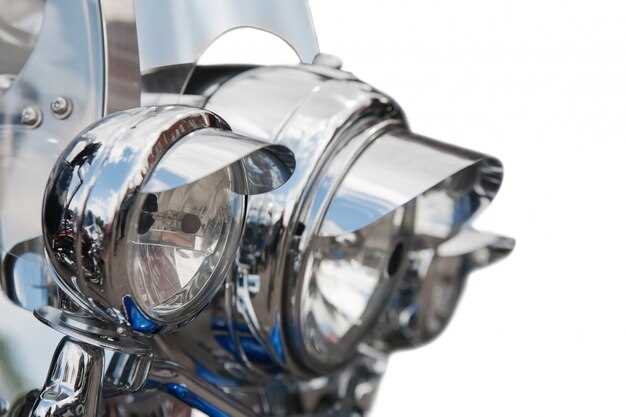
In the quest for enhanced engine performance, the intake system plays a pivotal role. By optimizing how air enters your engine, you can significantly increase horsepower, torque, and overall efficiency. Modifications to the air intake system allow you to tap into your engine’s full potential, ensuring it operates at its best under various conditions.
The air intake system serves as the first line of defense in the combustion process, where the right balance of air and fuel can lead to more powerful and efficient combustion. Stock intake systems are often restrictive, limiting airflow and ultimately stifling performance. By implementing aftermarket solutions such as cold air intakes or short ram intakes, enthusiasts can ensure a smoother, more direct airflow, which can lead to noticeable gains in engine power.
Moreover, the benefits of upgrading your intake system extend beyond mere power gains. Improved airflow can lead to better fuel economy, reduced engine strain, and enhanced throttle response. Understanding how your engine’s intake system functions is crucial for maximizing these benefits, allowing you to make informed decisions on which modifications best suit your vehicle’s needs.
Evaluating Different Air Intake Systems for Optimal Performance

When it comes to enhancing your vehicle’s engine performance, selecting the right air intake system is crucial. Different systems offer varying benefits, and understanding their characteristics can help you make an informed decision.
Cold Air Intakes are popular for their ability to draw in cooler air from outside the engine compartment. Cooler air is denser, leading to better combustion and increased power output. These systems typically replace the factory intake, allowing for improved airflow and reduced restrictions.
Short Ram Intakes are another choice, designed for quicker throttle response and engine sounds. They are easier to install than cold air intakes and allow for a slight performance boost, although they may draw warmer air from the engine bay, which can affect power in certain conditions.
Ram Air Intakes capitalize on the vehicle’s forward motion by directing high-pressure air into the intake system. This can significantly increase performance at higher speeds, but requires proper design to ensure effectiveness across a range of driving conditions.
When evaluating intake systems, consider factors such as your driving style, climate, and engine modifications. Testing different systems on a dynamometer can provide valuable insights into the performance gains each system offers. Ultimately, choosing the right air intake system is about optimizing airflow while ensuring compatibility with your vehicle’s overall performance goals.
In summary, an informed evaluation of available air intake systems can lead to significant improvements in your engine’s power and efficiency. Prioritize quality, installation, and performance metrics when making your selection.
Step-by-Step Guide to Installing Aftermarket Intake Components
Installing aftermarket intake components can significantly enhance your engine’s performance by improving airflow. Follow this simple guide to ensure a successful installation of your new intake system.
Step 1: Gather Tools and Parts
Before starting the installation, gather all necessary tools and components. You’ll typically need a socket set, screwdrivers, pliers, and potentially a torque wrench. Ensure you have the new intake system, any necessary adapters, clamps, and gaskets ready.
Step 2: Disconnect the Battery
Safety first! Begin by disconnecting the battery to prevent any electrical issues or shocks while working on the vehicle.
Step 3: Remove the Factory Intake
Carefully detach the factory intake system. Start by removing the air filter cover and the air filter itself. Then, follow the intake piping and loosen any clamps holding it in place. Unplug any sensors connected to the factory intake as well.
Step 4: Clean the Intake Area
After removing the factory components, clean the area where the new intake will be installed. This step ensures that no debris enters the engine and promotes a good seal with the new components.
Step 5: Install the Aftermarket Intake System
Begin installing the new intake system according to the manufacturer’s instructions. Start with the intake manifold or elbow. Secure it tightly using the provided clamps, ensuring that it aligns properly with the throttle body.
Step 6: Connect Sensors and Breathers
Reinstall any sensors or breathers that were detached during the removal of the old system. Ensure all connections are secure and properly positioned to avoid any future issues.
Step 7: Secure All Connections
Go through all clamps and bolts to ensure everything is tightened to the recommended specifications. This step is vital to prevent any air leaks that could affect engine performance.
Step 8: Reconnect the Battery
Once the installation is complete, reconnect the battery. Make sure the terminals are secure but be cautious about any live connections.
Step 9: Start the Engine
Start your vehicle to test the new intake system. Listen for any unusual sounds and check for air leaks around the connections. If everything sounds good, take the car for a short drive to ensure proper performance.
Step 10: Monitor Performance
After installation, monitor your engine’s performance over the next few weeks. Take note of any changes in power, throttle response, or fuel efficiency. If you encounter issues, double-check your installation and make necessary adjustments.
Tuning Your Engine for Enhanced Airflow and Power Output

Tuning your engine to improve airflow is a crucial step in maximizing its performance. The process involves modifying various components of the intake system to ensure that your engine receives the optimal amount of air needed for combustion. Enhanced airflow translates directly into increased power output, enabling your vehicle to achieve better acceleration and efficiency.
One of the primary modifications for improved intake is upgrading the air filter. High-flow air filters allow a greater volume of air to enter the engine, reducing the restriction caused by factory filters. This improvement in airflow not only amplifies engine performance but also contributes to a more responsive throttle.
Another effective tuning method includes installing a performance intake manifold. The design of the manifold can significantly influence the flow characteristics of the incoming air. A performance intake manifold typically features larger runners and optimized shapes, promoting smoother airflow and better distribution to the engine’s cylinders.
Additionally, consider implementing a cold air intake system. This type of system draws cooler, denser air from outside the engine bay, rather than warmer air that is more likely to be present near the engine. Cooler air contains more oxygen, facilitating a more efficient combustion process and thereby enhancing power output.
After making these intake modifications, fine-tuning the engine’s ECU (Engine Control Unit) is essential. Adjusting fuel maps and ignition timing helps to maximize the benefits of improved airflow. This ensures that the engine is delivering the right amount of fuel in accordance with the increased air intake, resulting in an optimized air-fuel mixture.
Lastly, always monitor engine performance following modifications. Using tools like dynamometers can provide insight into changes in horsepower and torque, helping you to assess the effectiveness of your tuning efforts. This data-driven approach will help you identify any additional adjustments needed for even greater performance gains.



